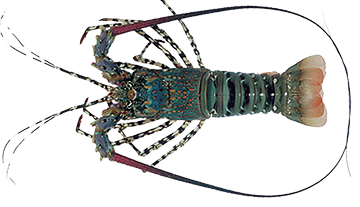Lobster or crayfish?
- rosemarydearman1
- Oct 29, 2019
- 4 min read
"Sometimes, they migrate in very large groups in long files of lobsters across the sea floor. These lines may be more than 50 lobsters long." Wikipedia


My November page of my beautiful State Library diary features this amazing picture of what I now think is a spiny lobster, rock lobster or crayfish (as we call them in Australia).
It's a painting from a book called Poissons, Ecrevisses et Crabes by L. Renard, dated 1754. The book actually has a longer title that includes the name of the part of the world he is exploring - the Moluccas/Maluki islands of Indonesia. It's such a beautiful picture - the one at the top is from my diary and is somewhat marred by the page line in the middle, so I also found the one below from a copy at the National Library but as you can see the colours are not as vibrant. Now they are probably truer to the original than mine which, after all, has doubtless been Photoshopped by the designers of the diary. But anyway I loved it and decided to do lobster today.
My first mission was to find out what kind of lobster it was - the painter just calls it a lobster. In an inscription by a second image of a similar animal, he says it's from the Isle de Louvers - which I cannot find - Lakor perhaps, which is a small island at the bottom of this particular Indonesian archipelago? Of course these days the islands all have Indonesian names. He also says that it is found in the mountains and climbs trees. This second painting is not as striking as the ones above. It's the way he has stretched out the tentacles I guess that makes it so striking. That and the beautiful markings.

I don't know if this page stretches over to another. Maybe it does and he has the tentacles on there.
Now do we believe this - that it climbs tress that is? The reason I ask is because on the same page as the lobster is a mermaid. And I don't think we believe in them.


However when I added 'climbs trees' to my search terms I found several articles on a recently discovered 'tree lobster' that had been found on Lord Howe Island - well a rock stack offshore from there. It had previously been believed extinct and so there was enormous interest and excitement. However, nothing to do with my creature because (a) it looks nothing like my creature and (b) it's apparently an insect - a stick insect to be precise. Not that it looks much like one of them either. In fact they just look creepy. Still they have removed a few and bred them - and being insects they have bred lots. Let's hope they are not a pest.
So where our Monsieur L Renard gets the idea that his lobsters climb trees I do not know. Maybe, as I said, he made it up. Maybe he actually found another kind of tree climbing stick insect which was more colourful than these. Back then Europeans were fascinated by exotic animals, and knew very little about that part of the world. Indeed Australia was still more or less unknown altogether. So it's little wonder that things were made up.
So I continued my search and found pictures of what some called rock lobsters and some spiny lobsters - and ultimately, here in Australia - crayfish.
I have yet to find one with the same colouration as my original drawing but the one on the left looks similar. In all of the pictures I found the tentacles seem to be illustrated drawn back from the head, not pointing straight out spectacularly as in the original drawing.
Of course, people eat these creatures, though I believe they are perhaps not as tasty as crab and they don't have much meat. No claw meat here. But they are a major tourist attraction in that people go on chartered boats to catch and cook them in WA. They have just increased the quotas for this. Let's hope it's not too much.
I do quite like shellfish and crustacean dishes but would never cook them myself because you're supposed to cook them alive. I, like Nigel Slater could not possibly do this:
"Like most consumers, I am happy to tuck into fish or meat, but I want no blood on my hands, thank you. Many will argue that I do, and of course they have a point; but if I am a crab that has to die, I would rather go at the hands of someone who knows what they are doing than someone who dangles me over the boiling brine then wimps out." Nigel Slater
In the same article he tells a story of how he once determined to do this, but chickened out when he got to the head of the queue at the fishmongers. I would have too. That quote at the top of the page also makes them sound rather endearing - apparently they are very social animals, although they will desert one of their group if it is diseased. And another tiny fact - they repel predators by making an awful sound by scraping their claws, against their bodies.
You can buy them already cooked of course. But then maybe originally they were cooked alive. Honestly as I grow older I am more and more going off eating any meat or fish and also more and more pushing thoughts of how it gets to my plate to the extreme reaches of my mind. Very hypocritical of me I know.
If you do want to cook rock lobster/crayfish/spiny lobster, then SBS Food has a pretty comprehensive cross-section of all the things you can do with it.















Comments